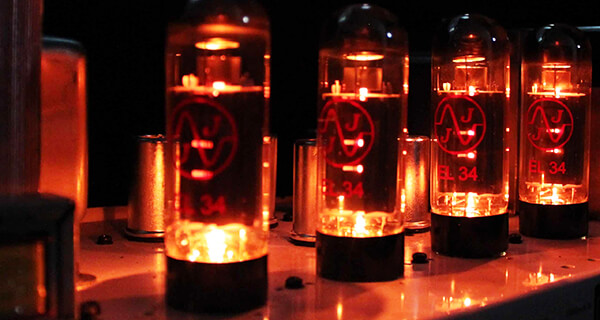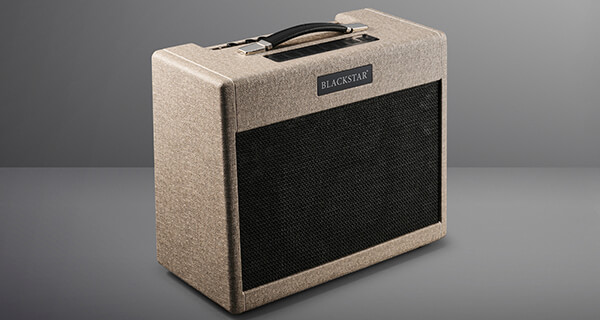Are Tube Amps Better [Tube Amp Vs Solid State]
In the realm of audio enthusiasts, a question that has ignited countless debates is whether tube amplifiers are truly superior to their solid-state counterparts. The allure of tube amps, also known as valve amplifiers, is undeniable, stemming from their historic significance, iconic sound, and dedicated following.

In this exploration, we delve into the captivating world of tube amplifiers, unraveling their distinct characteristics, their role in shaping musical history, and the ongoing discourse surrounding their perceived sonic supremacy. Join us on this sonic journey as we dissect the age-old question: Are tube amps better?
# Table of Contents =>
The Evolution of Tube Amplifiers –
Tube amplification technology emerged in the early 20th century & played a pivotal role in shaping the audio landscape. These amplifiers utilize vacuum tubes, it also known as valves, to amplify audio signals.
The vacuum tubes contain cathodes, anodes, and control grids that manipulate the flow of electrons to amplify the input signal. This technology revolutionized communication, broadcasting, and music reproduction.
Historical Significance –
Music history is indelibly marked by tube amplifiers. Jimmy Page, Eric Clapton, and Jimi Hendrix all used tube amplifiers. The warm and organic tonal characteristics of tube amps have become synonymous with the golden era of rock and blues. Moreover, tube technology contributed significantly to the advancement of radio broadcasting and the dissemination of music, fostering the growth of popular culture.
Sonic Characteristics of Tube Amps –

One of the primary reasons for the enduring allure of tube amplifiers is their distinct sonic profile. Advocates of tube amps often emphasize their ability to produce a warm, rich, and harmonically complex sound. This characteristic is attributed to the natural harmonics generated by the nonlinear behavior of vacuum tubes.
As tubes approach their limits, they introduce even-order harmonics that are pleasing to the human ear. This phenomenon contributes to the perception of a “musical” sound quality that many listeners find captivating.
Tube amplifiers are known for their smooth and gradual clipping when pushed to high volume levels. This clipping is less harsh compared to the abrupt clipping of solid-state amplifiers, which some audiophiles argue results in a more pleasing distortion for musical instruments like electric guitars.
What is the Difference Between Tube Amps Vs Solid State Amp:
Comparison Table:
| Features – | Tube Amps | Solid-State Amps |
|---|---|---|
| Technology | Vacuum tubes | Transistors, integrated circuits |
| Sound Characteristics | Warm, harmonically rich | Accurate, clear |
| Distortion and Clipping | Gradual, smooth clipping | Abrupt, precise |
| Reliability | Less reliable, more maintenance | More reliable, less maintenance |
| Size and Weight | Bulky, heavy | Compact, lightweight |
| Cost | Generally costlier | More cost-effective |
| Applications | Vintage sound, music, audiophiles | Accurate sound, sound reinforcement |
1. Technology:

Tube Amp: Use vacuum tubes for amplification via electron flow in a vacuum.
Solid-State Amp: Employ semiconductor components for amplification.
2. Sound Characteristics:
Tube Amp: Known for warm, harmonically rich sound with pleasing distortion.
Solid-State Amp: Deliver accurate, clear sound with minimal distortion.
3. Distortion and Clipping:
Tube Amp: Gradual, smooth clipping for pleasant overdrive.
Solid-State Amp: Abrupt, precise clipping, suitable for certain genres.
4. Reliability and Maintenance:
Tube Amp: Require more maintenance due to tube replacement and generate more heat.
Solid-State Amp: More reliable, need less maintenance, generate less heat.
5. Size and Weight:

Tube Amp: Bulky and heavy due to components like vacuum tubes.
Solid-State Amp: Compact and lightweight due to fewer components.
6. Cost:
Tube Amp: Generally costlier due to tube-related expenses.
Solid-State Amp: More cost-effective to manufacture and purchase.
7. Applications:
Tube Amp: Ideal for vintage, rich sound in music and audiophile setups.
Solid-State Amp: Suited for accuracy in sound reinforcement and home theaters.
The Myth of Perceived Superiority –

The debate over whether tube amplifiers are objectively “better” than solid-state amplifiers often hinges on subjective perception. While the tonal characteristics of tube amps are favored by many, it’s important to note that preferences for sound are highly individualistic.
Some listeners may prefer the accuracy and precision offered by solid-state amplifiers, appreciating their ability to reproduce audio signals faithfully without introducing coloration.
Tube amps do have their drawbacks, including greater heat generation, bulkier designs, and higher maintenance requirements due to the need to replace worn-out vacuum tubes periodically. Solid-state technology has advanced significantly, yielding amplifiers that can provide exceptional clarity and power without the complexities associated with tube amplification.
Nuances of Tube Amp Usage –
To fully appreciate the capabilities of tube amplifiers, it’s crucial to understand their optimal usage scenarios. Tube amps truly shine when played at moderate to high volumes. This is because the inherent characteristics of vacuum tubes become more pronounced as they approach their limits.
Playing at lower volumes may not allow the tubes to exhibit their full tonal potential, which can lead to a perception of underwhelming performance.
Moreover, the choice of speakers can significantly impact the overall sound when using tube amplifiers. Matching the right speakers with the amplifier’s output impedance is crucial for achieving the desired sonic results. Tube amps can be finicky with mismatched speaker impedance, potentially leading to tonal imbalances and reduced efficiency.
Modern Interpretations and Hybrid Solutions –

In recent years, the audio industry has witnessed the emergence of hybrid amplifiers that combine tube and solid-state technologies. These hybrids attempt to capitalize on the best of both worlds by incorporating the warmth and character of tubes with the efficiency and reliability of solid-state components.
While purists may view these hybrids with skepticism, they offer a compromise for those seeking a balance between vintage tonality and contemporary convenience.
In the end, The debate surrounding the superiority of tube amplifiers remains a subjective and passionate topic within the audio community. While tube amp undeniably hold a special place in the history of music and audio technology, the notion of their sonic superiority over solid-state amplifiers is nuanced.
The distinct tonal characteristics of tube amps, marked by warm harmonics and pleasing distortion, have a unique appeal to many listeners. However, modern solid-state technology has made remarkable strides in delivering accuracy and fidelity, challenging the notion that tubes are inherently superior.
Ultimately, the choice between tube and solid-state amplifiers boils down to individual preferences, intended usage scenarios, and the specific qualities that each listener values in their audio experience. As technology continues to advance, both camps of amplifier enthusiasts can appreciate the diversity and richness of options available in the pursuit of sonic perfection.
FAQs –
Q1. Are tube amp better than solid-state amps?
Answer: The answer depends on personal preference and the desired sound. Tube amp is known for their warm and organic sound, often favored by musicians for their natural harmonic overtones. Solid-state amps offer reliability, portability, and cleaner tones.
Q2. Why do tube amp sound different?
Answer: Tube amps produce sound through vacuum tubes, which naturally introduce harmonic distortion and compression. This characteristic is often described as “warm” and “musical,” contributing to their unique sound.
Q3. Do tube amp require more maintenance?
Answer: Yes, tube amp require more maintenance compared to solid-state amps. Tubes wear out over time and need occasional replacement. They are also more sensitive to environmental conditions and require careful handling.
Q4. Are tube amps heavier than solid-state amps?
Answer: Yes, tube amps are typically heavier due to the presence of vacuum tubes and transformers. Solid-state amps, being transistor-based, are generally lighter and more portable.
Q5. Do tube amp respond better to playing dynamics?
Answer: Yes, tube amps are known for their responsiveness to playing dynamics. They tend to “clean up” when you play softly and produce more saturation when played harder, creating a more expressive playing experience.
Q6. Do tube amp handle effects pedals differently?
Answer: Tube amp can interact with effects pedals in a unique way, often enhancing the pedal’s characteristics due to their harmonic distortion. Many players appreciate the way tube amps respond to pedals.
Q7. Can I get a high-gain sound from a tube amp?
Answer: Yes, tube amps can achieve high-gain sounds commonly used in rock and metal genres. Many modern tube amps come with gain stages specifically designed for heavy distortion.
Last Updated on September 14, 2023 by Perry Garner


